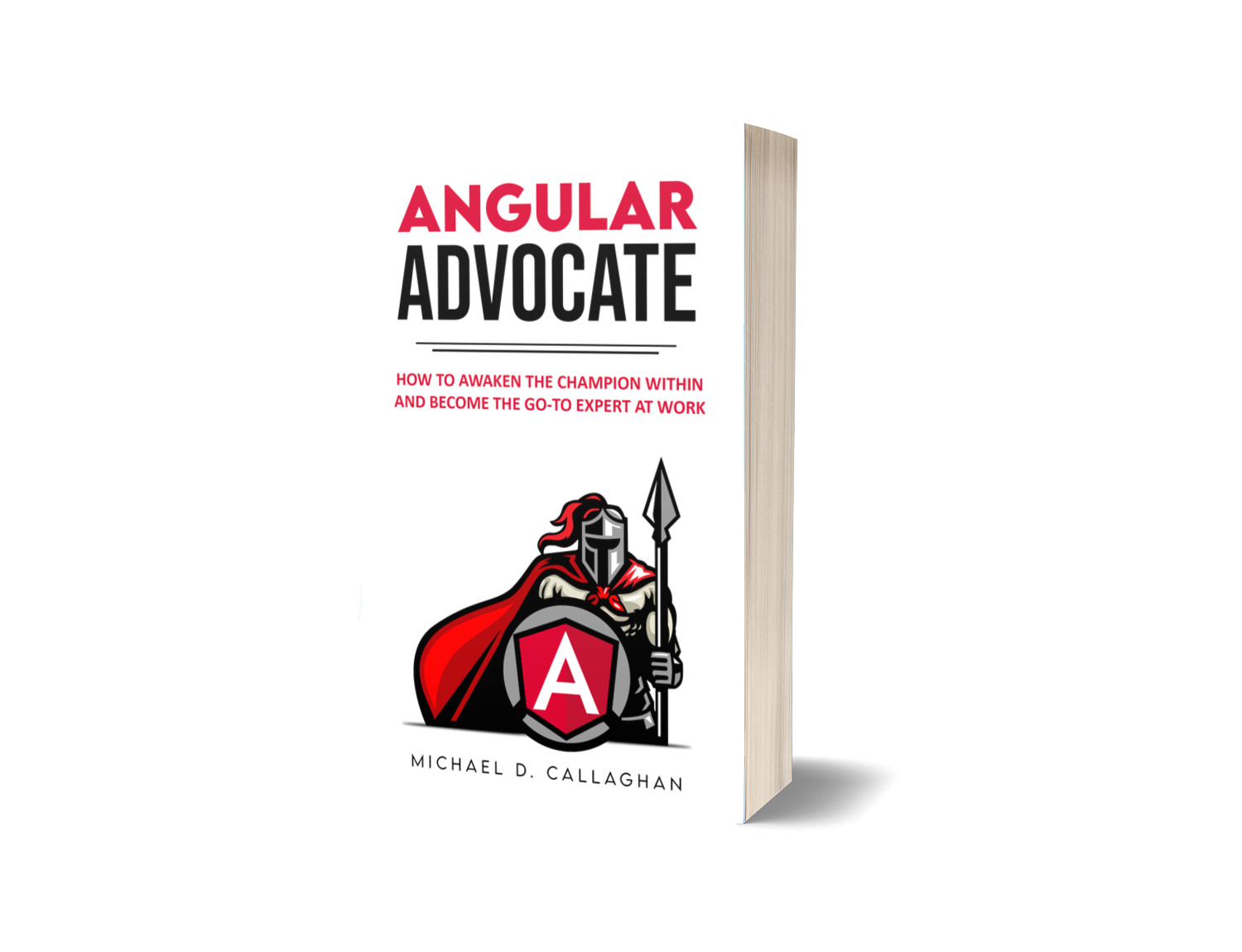How I became the go-to Angular Advocate at work – and how you can, too!
In late spring 2018, my manager approached me with some interesting news. He explained that our executive director had complained that although Angular was prevalent throughout his organization, his own developers were not very experienced with it.
What could be done about that? They discussed various options, from video course subscriptions, to books, to hiring an outside training firm to provide the necessary training.
At that point, my manager spoke up. “What if we ask Mike Callaghan to do it?” He then proceeded to recommend me in an executive meeting to train a group of our software developers how to use Angular.
Before I knew it, I was the Angular Advocate.
My Angular Journey
I’ve been using Angular since AngularJS 1.2 or so. My first ever Angular app was a mobile swimming coach, implemented with the Ionic Framework and AngularJS.
Today I build web applications with Angular almost exclusively, though I admit to having dabbled briefly with React, even so far as to writing a book on using React with Ionic.
When I start a new application, either personally or professionally, I tend to start with Angular.
What’s in this book?

This book consists of a series of essays I have written for various technical audiences over the past year or so. They are either directly or indirectly related to Angular development.
However, this is not a book for web development beginners. There are plenty of those. Instead, this book is designed to appeal to experienced web developers with some exposure or experience with Angular.
The content you will find is, admittedly, opinionated, as is the entire Angular ecosystem.
I describe solutions that worked for me and my team. There are probably other approaches and solutions that would also work, but I will not dwell on them.
The content of this book represents my experience, and I hope you will be able to learn something from it.
Topics Covered
Here are some of the topics that are covered in the book. Notice it is not all simply Angular. There are other useful subjects that the Angular Advocate needs to understand.
How to introduce coworkers to TypeScript. How to provide coworkers a Gentle introduction to Angular. How to create a simple “no-code” Angular component. How to display “offline” status in an Angular app. How to support [(ngModel)] in a custom Angular component. When to use route resolvers, and when not to use them. How to keep up with Angular releases. Fortunately, @Angular makes it easy to do. Understanding service APIs from both the producer and consumer point of view. Keeping your deployment options open. How to spin up a test API quickly and easily with Firebase. The benefits of Progressive Web Apps (PWAs) and when to use them. How to embrace RxJS and become truly effective. How to use Test-driven-development (TDD) effectively with Angular. Knowing what code to test (and what code not to test). Knowing what all those weird symbols on the command line are all about. How to revert your (or your team’s) mistaken git commits. How to provide source code without the overhead of the git repository. Understanding how people learn, before you need to teach. Knowing the basics of how to teach is critical on the path. How to get people to pay more attention when you speak. Why you should pay attention to spelling and grammar. Understanding the basics of agile planning. Where to get Creative-Commons licensed images for almost any purpose.
How to Reserve Your Copy
If these things sound interesting, and I hope they do, please consider placing an order today at AngularAdvocate.com.
I am also releasing the first three chapters, free of charge. You can download the free PDF today.
Do you have any comments, questions, or just want to see more? Please follow me on Twitter and let me know.
Did I make any mistakes in this post? Feel free to suggest an edit.